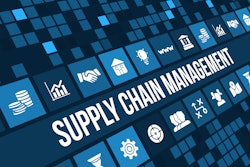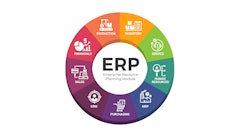
Supplier diversification is no longer a question of if or when. It’s a question of how much.
From geopolitical instability and shifting regulations to climate impacts and tariffs, the range of disruptions organizations face is wider than ever. Nearly all chief supply chain officers (CSCOs) (94%) and chief procurement officers (CPOs) (96%) express concern about risks threatening their supply chains over the next two years, and supplier diversification has emerged as a critical strategy in response.
Already, more than half of organizations have diversified their supplier networks geographically in response to this growing uncertainty, and another 46% plan to do so within the next 18 months. Nearshoring and regional production are also gaining traction as companies look to build resilience.
We find ourselves in a moment where business leaders have developed a heightened awareness of concentration risk and for good reason. Relying on single-source or geographically limited supplier networks introduces significant vulnerabilities, especially as supply chain and procurement leaders are increasingly tasked with mitigating operational, regulatory, and even climate risk for their organizations broadly.
But as support for diversification grows, leaders face new questions: How much diversification is enough? How often should they adjust? And what new emerging risks can’t be overlooked in the rush to diversify?
Where organizations fall on the supplier diversification spectrum
Just a few years ago, supplier simplification was the trend. Companies streamlined their vendor networks to improve efficiency and consolidate oversight, often turning to specific criteria like sustainability impact to help scale down their supplier pools.
Today though, the pendulum has swung back to expanding supplier bases to hedge against volatility.
That said, supplier diversification isn’t a one-size-fits-all strategy — it exists on a spectrum. Endless diversification is neither a smart goal nor a sound strategy.
Rather, effective programs are agile, adapting to evolving risks and business needs. Instead of maximizing or minimizing their supplier base, companies should focus on developing the flexibility to scale both up and down as needed. Future-proofing supply chains in this way requires processes and tools to continuously assess diversification needs and act decisively.
Here are 6 ways organizations can strengthen supply chain strategies:
Build strategic self-awareness upfront
The ability to confidently answer “Should we diversify more or less right now?” starts with internal alignment. Companies should establish a clear framework for evaluating risks and opportunities and involve stakeholders beyond procurement and operations.
In 2025, for example, leaders from legal or IT can surface hidden risks related to compliance or security — even if those stakeholders haven’t been included in supply chain conversations in the past. It’s the job of a CSCO and CPO to help all leaders see the importance of having mechanisms in place to calibrate the company’s supplier diversification strategy over time, which is often best achieved with early dialogues.
The takeaway? Broad input now sets the stage for faster, more unified decision-making later.
- Identify the most critical risks
Take a wide-angle view to understand which parts of the supply chain are most vulnerable. Whether it’s rare earth minerals or high-volatility commodities like coffee, understanding the broader economic and geopolitical landscape of the supply chain makes it easier to identify the products that stand to benefit the most from supplier diversification.
It’s not enough to identify these vulnerabilities, however. Leaders must also come to an agreement on why these are the right elements to focus on now. This level of critical thinking ensures companies are monitoring for risks more intentionally and with a specific end goal in mind.
Again, engaging cross-functional leaders during this analysis builds early awareness and makes it easier to secure buy-in when diversification decisions arise.
3. Establish ongoing risk monitoring tools
Once leaders have identified the elements of their supply chain that are mission critical, they should set up systems to monitor key indicators — from commodity price swings to geopolitical developments. Some trends require more careful and closer digging, while others are the biggest current news headlines and easier to follow.
Remember, the goal isn’t just data collection — it’s actionable insight. When signals arise, companies should be prepared to adjust their strategy proactively, whether that means diversifying or consolidating.
4. Pressure-test new supplier relationships
Every industry has its own process, tools, and experts for sourcing suppliers. What’s key is to follow best practices closely and proactively find new partners with enough time to vet them.
Avoid reactive, last-minute supplier changes — there’s risk in making changes too quickly, just as too slow. Instead, companies should source and evaluate new partners using established criteria, from material quality and labor practices to emissions performance.
Likewise, weigh the trade-offs between diversification (which can increase operational complexity) and more centralized approaches like vertical integration. Test thoroughly to understand where each model best serves business goals.
5. Ramp up methodically
After leaders have identified and vetted new suppliers, it’s prudent to scale engagement gradually rather than switching overnight.
The pace at which a company ramps up new supplier relationships can often be dictated by the product at hand. For example, complex products, like machinery or electronics components, require meticulous testing and phased rollouts. In this case, a company may consider piloting with a shorter-term procurement need to understand if the new supplier relationship can be built upon and perfected over time.
For less complex products, like certain textiles for instance, companies can accelerate more quickly. Either way, leaders should rely on their organization's standard procurement processes to ensure smooth onboarding and minimize friction.
6. Nurture both new and existing supplier relationships
Diversification expands a company’s partner ecosystem, which requires robust relationship management. Establishing two-way communication channels with suppliers is critical to strengthening trust and unlocking mutual value.
For example, meaningful supplier performance reviews can help connect diversification decisions back to business outcomes, reinforcing their strategic value to internal stakeholders. If CSCOs and CPOs are not properly preparing for these conversations though, it’s difficult to prove the effectiveness of diversification efforts, which may make it more challenging to advocate for future supplier changes.
To help make a strong case, track supplier performance closely. This way, when it comes time for a company to adjust its supply base, decision-makers are already aware of any potential impacts on cost, delivery, regulatory compliance, and sustainability.
Finally, recognize that as supply networks grow, so do reporting demands.
When asking a supplier for specific metrics for reporting needs, follow a documented methodology for making requests so they’re clear — leaders should also follow up on how they used any information provided. For example, if a company has learned that a new supplier has helped reduce its supply chain emissions by 10%, sharing that positive performance data could help the new partner win and grow their business elsewhere.
Companies require a supplier base always ready for what’s next
Supplier diversification is not a trend — it’s a business imperative and a hallmark of a resilient, agile supply chain strategy.
Modernizing supply chains depends on the ability of CSCOs and CPOs to dynamically and intentionally adjust supplier networks in response to evolving risks across geopolitical, environmental, and economic landscapes. And this capability hinges on the tools, processes, and leadership teams companies have in place ahead of time.
It’s no longer about if or when to diversify — it’s about how much. And that question isn’t going away anytime soon.



















